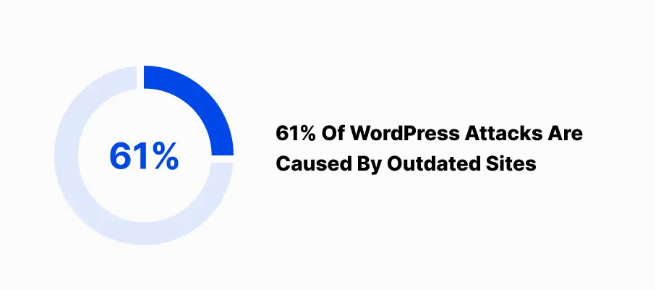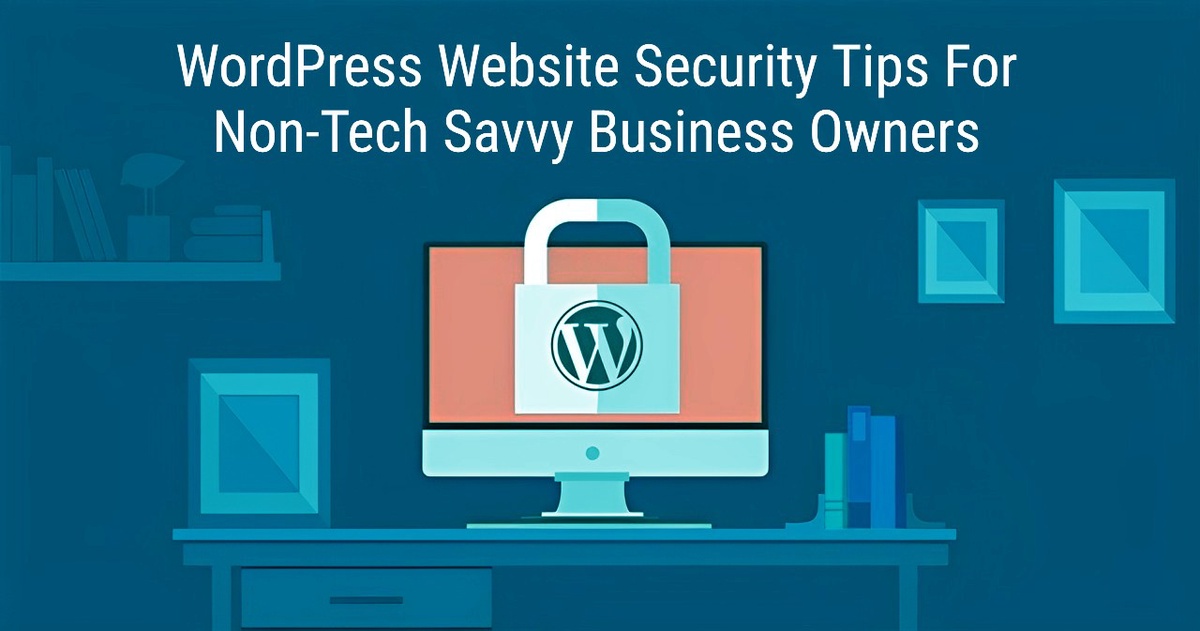WordPress powers close to 43.1% of all websites[Source]. Being a popular CMS, it has become one of the most common targets for hackers.
The below security statistics of WordPress by betterstudio.com will leave you in awe.
At least, 13,000 WP sites are hacked per day (this means around 9/min, 390,000/month, and 4.7 million/yr).
WordPress gets attacked an average of 90,000 times a minute.
Therefore, it is necessary to consider the implementation of some of the best security practices for providing a secure website experience to users.
Read on to explore some proven tactics that can help you keep your website safe.
Table of content:
Make your WordPress site secure: Things to do
- Keep your WordPress site updated
- Incorporate strong login credentials
- Conduct WordPress security scans
- Utilize WordPress security plugins
- Enable SSL/HTTPS
- Regular site backup
How to know your site is hacked?
What to do when a WordPress site is hacked?
In summary
Make your WordPress site secure: Things to do
Although there is no assurance of being successful in achieving 100% security, incorporating certain safety measures such as regular scans and secure plugins can reduce the vulnerabilities for security breaches.
Below are some best practices that you can follow to place a safety shield around your website.
Keep your WordPress site updated
Outdated WordPress sites increase vulnerability and are the cause of 61% of security attacks.

[Image source-betterstudio.com]
With outdated WP software, you won't be able to update themes and plugins, adding to the security risks. The latest WordPress releases and updates come with enhanced security features and bug fixes. So it is worthwhile to ensure that the site is running with the latest and most secure WordPress version.
On average, WordPress updates are rolled out every three months. The update can be performed manually or automatically (via your WordPress dashboard).
Incorporate strong login credentials
As per betterstudio.com, around 81% of WordPress hacks are due to weak or stolen passwords.
To save your site from unauthorized WordPress login incidents, create robust passwords that will prevent someone from breaking into the account. Additionally, the below measures will help prevent unwanted entries to your site -
* Two-factor authentication
* Updating the WordPress account from the "admin" username to another one
* Limiting the login attempts or adding captchas
Conduct WordPress security scans
Regular security scans let you identify vulnerabilities and outdated site components like plugins, themes, libraries, and common entry points for cyberattacks. Security scans at regular intervals are required for prompt detection and resolution of potential threats.
To initiate website scans, you can utilize WordPress security plugins like Wordfence security or Sucuri. However, the process of scanning a website for security purposes entails a thorough examination of the site's files, databases, and configurations. You might need high-level technical assistance to identify and resolve the issues. Here, hiring a WordPress developer can help. They will conduct a thorough security scan of the website and provide tailored solutions and recommendations to address underlying security issues.
Utilize WordPress security plugins
WordPress comes with various security plugins, including iThemes Security, Sucuri, Wordfence, and many more. You can use them to protect your website from malicious attacks. Plugins provide a convenient way to fuel your site's defenses.
Remember that while these plugins can improve your website's security, they are just one part of a security strategy. Regularly updating your plugins, themes, and WordPress core using strong passwords and implementing secure hosting practices are also essential for a robust security posture.
However, if you are not familiar with WordPress and the basic web security concepts, you can opt to consult a WordPress security expert and get security plugins configured as per your needs.
Enable SSL/HTTPS
Another crucial tactic to fortify your site's security is enabling SSL/HTTPS encryption. This creates a secure connection between your web server and the user's browser, ensuring that the data transmitted remains private and encrypted.
The presence of an SSL certificate on your site is denoted by a padlock icon in the address bar. It serves as a clear indicator of a secure connection, fostering trust among users with the assurance that their data is being transmitted securely.
Regular site backup
During a security breach, a hack, or a critical error, backups serve as a safety net. Backing up your WordPress site lets you roll back to the version before it was compromised by security threats. You can restore your site to a previous, clean state, minimizing data loss. It is especially helpful when you are unable to remove the malware immediately.
Not a direct security measure, but backups are an essential part of a comprehensive security strategy for a WordPress site. Furthermore, it is also essential to back up your site before updating it to ensure having a copy of the existing version that one can revert to if something goes wrong during updation. However, to save yourself from the manual hassles of creating a backup of the WordPress site, hiring a WordPress developer can be the solution.
How to know your site is hacked?
Hackers can use stealthy techniques to hide their presence. They may inject malicious code or backdoors deep within your website's files or database, making it difficult to spot the changes.
Many a time, detecting a hack requires a manual inspection of website files and databases, which can be time-consuming and technically challenging for site owners. Here the solution is hiring a WordPress expert who can handle the task with proficiency.
Let's examine the typical signs that indicate your WordPress site may have been compromised.
A sudden decrease in website traffic- A significant decrease in the number of visitors to your website could be a sign of a security breach. Hacked sites may be redirected or flagged by search engines, leading to a drop in traffic.
Data injection- When this happens, you will notice unauthorized changes to your website’s content (like spammy or irrelevant links, text, images, etc.) and unexpected redirections. If you start noticing such signs, there might be chances that hackers have injected malicious code or spammy links into your website's content or code.
Unable to login into your WordPress site- If you find yourself locked out of your WordPress admin dashboard, it could indicate unauthorized access or changes to your login credentials.
Presence of suspicious user accounts within WordPress- The presence of unfamiliar or suspicious user accounts in your WordPress admin panel can be a clear indication of a hack.
Inability to send or receive WordPress emails- In some cases, a hacked WordPress site may have its email functionality compromised, which can prevent communicating with users and customers through emails.
If you notice any of the above mentioned signs, it is crucial to take immediate action to investigate and address the security breach of your WordPress site.
What to do when a WordPress site is hacked?
Restoring your compromised WordPress site can be challenging and requires you to be tech-savvy. For this reason, we strongly advise you to hand over your site cleanup process to a WordPress security expert, who can do it effectively.
Nevertheless, here are the steps you can follow to mitigate your site’s damage -
Isolate the site- Firstly, take your site offline by temporarily disabling it. It will prevent further damage and protect your site visitors from security risks.
Change passwords- The next crucial step is changing all passwords associated with your WordPress site. Use strong or unique passwords for each.
Audit user accounts- Review all the user accounts. Delete any suspicious or unused accounts, if found, and change the password for the remaining ones.
Backup and restore- If you maintain a clean backup of your site, restore it to the point before the hack occurs. Here, you must also make sure that the backup files are free of malware.
Consider professional help- If the hack is complex or you are unsure about the cleanup process, opt for the services of a professional WordPress security expert company. They possess ample knowledge of performing a thorough cleanup of your WordPress site.
In summary
Ensuring the security of your WordPress site is not a one-time task. It is a continuous practice. Whether fortifying login procedures or updating your WordPress site, every measure plays a crucial role in maintaining your site's security.
In the realm of WordPress website security, non-tech-savvy business owners often find themselves in the middle of a complex landscape. It necessitates seeking expert guidance or reliable resources to secure one's WordPress site against potential breaches. Nevertheless, following the tactics mentioned in this post can make your site less vulnerable to security threats.


No comments yet